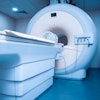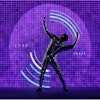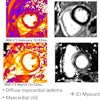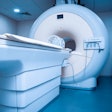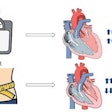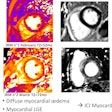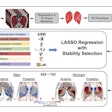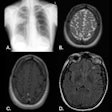A major overhaul in how radiologists learn about contrast media use and the management of contrast-induced adverse drug reactions (ADRs) is required to boost confidence in daily practice, a large new European survey has found. Special sessions at conferences, dedicated training periods during residency, routine didactic lectures, interactive group sessions, hands-on workshops, and more support by pharmaceutical companies are essential, according to Dr. Carmen Mallardi, from Università degli Studi di Milano in Italy, and colleagues.
"This is what young radiologists need and request," they told ECR 2024 delegates. "Most young radiologists claimed they did not receive dedicated training. An extreme heterogeneity of responses was observed about contrast media indications/contraindications and injection strategy."
The authors' questionnaire was sent via email on 4 September 2023 to radiologists and radiology residents younger than 40. The questionnaire was also distributed using the social media channels of various European radiology societies. The online survey was available until 6 October.
A total of 454 respondents (mean age: 32 ± 4 years, range 25-39) from 48 countries replied to the questionnaire. One-third of the respondents studied or practiced in Italy. Most respondents were radiology residents (n = 271, 60%), while 183 respondents were board-certified radiologists (40%). Most survey participants (71%) worked in a university hospital, while 18.5% worked in a large community hospital. Respondents reported that in their institutions, around two-thirds of CT/MRI scans are performed with contrast media. In about half of the institutions, both CT and MRI were performed using two different contrast molecules.
Most participants (76.5%) reported that they were adequately informed about the use of contrast media in diagnostic and interventional procedures. A total of 83.5% were aware of the risk factors associated with ADRs, and 59% were familiar with the safety protocols stated by international scientific societies. About half of respondents had witnessed less than five severe ADRs to contrast media in the past 12 months. In patients with a previous severe ADR presenting with a new request for a contrast-enhanced exam, 43% said they always choose an alternative diagnostic procedure and 48% said they do so only in certain cases.
Only 30% of survey participants felt confident in managing an ADR; 31% received specific training on the use of contrast media during their residency, and only 18% were trained in the management of ADRs, with 93% rating their training on primary management of ADRs during residency as poor-to-average.
"A striking majority of 95.6% expressed a desire to enhance their understanding of contrast media use and the handling of its adverse effects," the authors noted. "While the majority (63.4%) of respondents acknowledged that intravenous [contrast media] injection is not contraindicated during breastfeeding, 34% and 25% assumed that it is not contraindicated or is contraindicated in pregnancy, respectively. The remaining 40.8% were not sure or stated that just in exceptional circumstances it would be contraindicated."
They added that the preferred contrast injection strategy in CT parenchymal exams and CT angiography was based on the patient's lean body weight in 70% and 35% of the respective cases -- a predeterminate fixed amount in 17% and 26% of cases, iodine delivery rate in 6% and 27% of cases, and scan time in 7% and 12% of cases. Also, 65% of survey participants were aware of the benefits of contrast-enhanced-ultrasound, but 55% of participants did not perform it.
Radiologists (83%) said they were better informed about the appropriate use of contrast media than residents (72%), as well as more confident in primary management of contrast-induced ADRs (37% vs 26%). Also, 75% of radiologists correctly declared that [contrast media] injection is not contraindicated during breastfeeding compared with 55% of residents. Interestingly, a higher percentage of residents (55%) performed contrast-enhanced ultrasound at their institution than radiologists (31%).
In the survey, the top five represented countries were Italy (35.5%), Slovenia (10%), Croatia (6%), Serbia (5%), and Spain (5%), the authors noted.
The co-authors of the ECR poster presentation were Dr. Carmelo Messina, Dr. Damiano Caruso, Dr. Roberto Cannella, Dr. Michail Klontzas, Dr. Vid Matišić, Dr. Žiga Snoj, Prof. Federica Vernuccio, and Dr. Domenico Albano.


